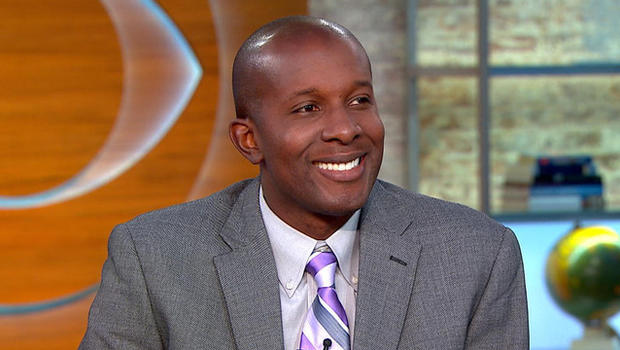/cdn0.vox-cdn.com/uploads/chorus_image/image/47447452/GettyImages-491191436.0.0.jpg)
What do foreigners find extremely surprising about American culture? Comment your guess below and then click here to find out!
/cdn0.vox-cdn.com/uploads/chorus_image/image/47447452/GettyImages-491191436.0.0.jpg)
What do foreigners find extremely surprising about American culture? Comment your guess below and then click here to find out!
 Asian-Americans are the United States’ most successful minority, but they are complaining ever more vigorously about discrimination, especially in academia
Asian-Americans are the United States’ most successful minority, but they are complaining ever more vigorously about discrimination, especially in academiaThis article looks at the history of Asian immigration and opportunity, and discusses possible factors that contribute to the high rate of academic achievement in the Asian-American population, along with the apparently disproportional university admissions numbers. It also considers the “bamboo ceiling” — the phenomenon of Asians excelling in lower and middle levels of professions, but no being visible in the upper echelons — and points at several potential reasons behind this discrepancy, from ingrained shyness to a dearth of mentors.
I’ve highlighted some excerpts below, but I encourage you to click here to read the whole article.
“Asian-Americans make up 5.6% of the population of the United States, [yet] they make up more than 30% of the recent American maths and physics Olympiad teams and Presidential Scholars, and 25-30% of National Merit Scholarships. Among those offered admission in 2013 to New York’s most selective public high schools, Stuyvesant High School and Bronx High School of Science, 75% and 60% respectively were Asian. The Asian population of New York City is 13%.”
“[A study] rejected the idea that Asians were just innately much cleverer than whites: there was an early gap in cognitive abilities, but it declined to insignificance through school. The higher socioeconomic status of Asian parents provided part of the explanation, but only a small part. […] Asian outperformance is thanks in large part to hard work. […] study showed a sizeable gap in effort between Asian and white children, which grew during their school careers.”
“Another study […] shows that Asian-American parents are a lot likelier to spend at least 20 minutes a day helping their children with their homework than any other ethnic group.”
 On apparent racial discrimination in academia:
On apparent racial discrimination in academia:“Some Asians allege that the Ivy Leagues have put an implicit limit on the number of Asians they will admit. [Upon examining admissions data] Asian-Americans need 140 SAT points out of 1,600 more than whites to get a place at a private university, and that blacks need 310 fewer points.”
“Top universities tend to admit blacks and Hispanics with lower scores because of their history of disadvantage; and once the legacies, the sports stars, the politically well-connected and the rich people likely to donate new buildings […] have been allotted their places, the number for people who are just high achievers is limited. Since the Ivies will not stop giving places to the privileged, because their finances depend on the generosity of the rich, the argument homes in on affirmative action.”
“…the Asian-American community is unwilling on the whole to oppose affirmative action. It tends to vote Democratic, and many of its members recall the years when they were a despised, not a model, minority. So those who dislike the way the system works tend to argue for it to be adjusted, not abolished…”

“It is true that although Asian-Americans do remarkably well at school and university, and have high average incomes, in the workplace they are under-represented in top jobs […] Asians do well in the lower and middle levels of companies and professions, but are less visible in the upper echelons.”
“Academia […] is stuffed with Asian-American professors, but among America’s 3,000 colleges there are fewer than ten Asian-American presidents”
“High-flying Asian-Americans […] suggest that cultural patterns may contribute to the group’s under-representation at the top. ‘There’s something in the upbringing that makes Asians shy’ […] ‘We’re brought up to be humble, […] My parents didn’t want to rock the boat. It’s about being quiet, not making waves, being part of the team.’ […] Asian-Americans are a large, diverse group exposed to a range of influences, but those who do reflect such patterns may be less likely to bid for leadership, even if they are highly qualified.“
“…Asians may find getting mentors particularly tough. Researchers [found that when students reach out to meet successful academics], [w]hite men got notably more responses than other groups; Asian-Americans of both sexes got fewer. Since the Ivies produce a disproportionate number of CEOs, Congressmen and judges, the apparent bias against Asian-Americans at leading universities may also keep Asians out of leadership spots.”
“[A study shows that] it was only when Jews had gained political power that the Ivies stopped discriminating against them.”
“Perceptions that Asian-Americans are being treated unfairly, especially in the workplace, may push more of them into politics.”
What do you think about the statistics or stereotypes employed this article? Do you think they are backed by legitimate reasoning or can you discern any areas for potential bias?
What are your thoughts on affirmative action and similar reparations?
Is it fair for high achieving individuals in a certain racial group are considered for admission differently than those of other racial groups?
Is it problematic that race is considered and that there may be racial quotas for university admissions? Or is it necessary (and morally just) to consider race if we’re striving for a fair system of academic admissions, given how much race has shaped socioeconomic opportunities historically?
The article provides many factors that influence the level of achievement of Asian Americans in formative schooling, higher education, and the professional world. Do you agree or do you believe there are other things to consider?
Do you think that an increase of Asian American political representation will change anything?

Click here for the NYTimes article discussion.

When Damon Tweedy begins medical school, he envisions a bright future where his segregated, working-class background will become largely irrelevant. Instead, he finds that he has joined a new world where race is front and center. The recipient of a scholarship designed to increase black student enrollment, Tweedy soon meets a professor who bluntly questions whether he belongs in medical school, a moment that crystallizes the challenges he will face throughout his career. Making matters worse, in lecture after lecture the common refrain for numerous diseases resounds, “More common in blacks than in whites.”
Black Man in a White Coat examines the complex ways in which both black doctors and patients must navigate the difficult and often contradictory terrain of race and medicine. As Tweedy transforms from student to practicing physician, he discovers how often race influences his encounters with patients. Through their stories, he illustrates the complex social, cultural, and economic factors at the root of many health problems in the black community. These issues take on greater meaning when Tweedy is himself diagnosed with a chronic disease far more common among black people. In this powerful, moving, and deeply empathic book, Tweedy explores the challenges confronting black doctors, and the disproportionate health burdens faced by black patients, ultimately seeking a way forward to better treatment and more compassionate care.”

Click here – Time magazine book excerpt

An interesting piece by Parul Sehgal which looks at cultural ‘‘cross-pollination’’/‘‘appropriation” throughout history, particularly referencing contemporary examples in pop culture and the resulting heated debate. Sehgal acknowledges the offensive nature of many of these cases, yet considers the dangers of restricting such exchanges.
“It’s a truth only selectively acknowledged that all cultures are mongrel.”
“It’s a seasonal controversy that attends awards shows, music festivals, Halloween: In a country whose beginnings are so bound up in theft, conversations about appropriation are like a ceremonial staging of the nation’s original sins.”
“…it has never been easier to proceed with good faith and Google, to seek out and respect context. Social media, these critics suggest, allow us too much access to other people’s lives and other people’s opinions to plead ignorance when it comes to causing offense….Seen in this light, ‘‘appropriation’’ seems less provocative than pitiably uninformed and stale. ”
“…writer Tom Bissell said ‘‘there would be fewer wars’’ if more novelists allowed themselves to imagine themselves into other cultures. It’s a seductive if utterly unverifiable claim.”
—
Click here to read the full article.
Is the contemporary preoccupation with cultural appropriation just part of this generation’s “outrage culture”, or is there legitimate cause for concern?
In your opinion, what is the difference between appropriation and appreciation? Where is the distinction between “colonizing” an identity and celebrating/sharing cultural experiences?
Sehgal talks about the evolution and globalization of hip-hop, which arguably — taking into account Korean b-boy champions, the Russian twerking phenomenon, and Iggy Azalea — has lost its identification with race. In this ever-shrinking world, we are exposed to and influenced by a diverse range of peoples; is it even possible to avoid the intermingling of cultures?
Are there any foreseeable merits to cultural appropriation/exchange? Can it function to bring us closer together as a people?


Sometimes a picture is truly worth a thousand words. For those of us from the ‘multiracial’ or mixed race community, photos of our population — our people, our families, our children — aren’t as shocking as they are an affirmation of what we have already known: Race is a social construct.
Click here to read an ongoing series of interviews with philosophers on race by George Yancy, philosophy professor at Emory University.

African American writer Rich Benjamin spent two years living in — and writing about — America’s whitest neighborhoods. The response to his book (and TED Talk) was honest, raw — and sometimes misunderstood his purpose. Here, he responds to the response.
Some quotes to think about:
“From Daniel Patrick Moynihan to Jonathan Kozol, there’s a wealth of literature by white experts trying to explain “the ghetto” to America. I had simply done the reverse. As a black thinker and writer, I interpret and explain mainstream white America back to itself.”
“I saw a culture driven by conscious and unconscious bias; I learned that a country can have racism without racists”.
“Many Americans dismiss racial integration as a form of “social engineering,” the opposite also holds true: Segregation is a form of social engineering”.